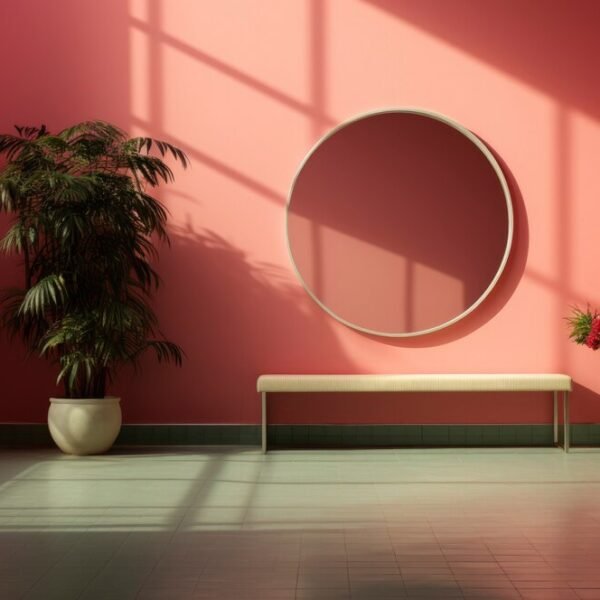The Best Paint Colors for Small Spaces: Making Rooms Feel Larger
Decorating small spaces can be a challenge, but the right paint colors can make a significant difference in how spacious and inviting a room feels. Choosing the appropriate shades can create an illusion of space, making even the tiniest of rooms appear larger and more open. In this blog, we’ll explore the best paint colors for small spaces and share tips on how to use them effectively.
Best Paint Colors for small spaces
Choosing the right paint colors can make a significant difference in how spacious and inviting a small room feels. Light, cool tones and strategic use of bold accents can create the illusion of a larger, more open space.
1. The Magic of Light Colors
Light colors are a go-to choice for small spaces because they reflect more light than darker colors, creating a bright and airy feel. Soft shades of white, cream, and pastel hues can make a room feel more open and spacious.
- Whites and Off-Whites: White is a classic choice for small spaces. Consider shades like pure white, eggshell, or ivory. Off-whites add a touch of warmth while maintaining the room’s airy feel.
- Light Gray: A light gray can add sophistication to a small space without making it feel confined.
- Soft Blues and Greens: Light blues and greens bring a calming and refreshing vibe to small rooms. These colors can make a space feel larger by creating a sense of depth.
2. Cool Tones for a Spacious Feel

Cool tones tend to recede, making walls appear further away than they are. This optical illusion is perfect for small spaces.
- Pale Blue: Pale blue is reminiscent of the sky and ocean, which can evoke feelings of openness and tranquility. It’s a great choice for bedrooms and bathrooms.
- Mint Green: Mint green is a fresh, cool color that can brighten up a room and make it feel more expansive. It works well in kitchens and living rooms.
- Lavender: Soft lavender is a cool tone that can add a touch of elegance while making a room feel larger. It’s ideal for bedrooms and nurseries.
3. Neutral Colors with Depth
Neutral colors can make a room feel more open and are also versatile enough to match any decor.
- Beige and Taupe: These shades are warm yet neutral, making them ideal for creating a cozy, spacious feel in small rooms. They work well in living rooms and bedrooms.
- Greige: A combination of gray and beige, greige offers the best of both worlds. It’s a trendy, sophisticated color that adds depth without overwhelming a small space.
- Soft Tan: Soft tan is a versatile neutral that can make a room feel warm and inviting while also appearing larger.
4. Using Bold Colors Wisely
While light and neutral colors are generally recommended for small spaces, bold colors can also work if used correctly.
- Accent Walls: Painting one wall in a bold color can add depth and interest to a small room without overwhelming it. Choose a wall that you want to highlight, such as the one behind a bed or a fireplace.
- Ceilings: Painting the ceiling a lighter color than the walls can draw the eye upward and create the illusion of height. Conversely, a bold ceiling color can add a dramatic touch and make a room feel more expansive.
- Trim and Moldings: Using a bold color on trim and moldings can create a striking contrast with lighter walls, adding character and a sense of dimension to the space.
5. Monochromatic Color Schemes
A monochromatic color scheme uses different shades of the same color to create a cohesive, harmonious look. This approach can make a small room feel larger by eliminating visual breaks.
- Shades of Gray: Using various shades of gray can add depth and interest while maintaining a spacious feel. Light gray walls with darker gray accents create a sophisticated look.
- Blues and Greens: A monochromatic scheme with blues or greens can be both soothing and visually expanding. Use lighter shades for walls and deeper hues for accents and furnishings.
6. Reflective and Glossy Finishes

Using paint with a reflective or glossy finish can enhance the sense of space in a small room by reflecting light and adding a touch of elegance.
- Satin and Semi-Gloss Finishes: These finishes reflect light more effectively than matte paints, making a room feel brighter and larger. They are also more durable, making them ideal for high-traffic areas like kitchens and bathrooms.
- Metallic Accents: Adding metallic paint accents or furnishings can introduce an element of luxury while amplifying light and space. Consider metallic trim or decorative elements to catch the eye.
7. Incorporating Light and Mirrors
Beyond paint, the strategic use of light and mirrors can enhance the effect of your chosen colors.
- Natural Light: Maximize natural light by keeping window treatments light and airy. Light paint colors will further reflect this natural light, making the room feel larger.
- Mirrors: Place mirrors opposite windows or light sources to reflect light and create the illusion of depth. Large mirrors can significantly impact the perception of space.
If you plan to renovate or build your home and office, Contact Us
Conclusion
Choosing the right paint colors is essential for making small spaces feel larger and more inviting. Light colors, cool tones, and neutral shades can all contribute to a sense of openness. Don’t shy away from using bold colors in strategic ways, such as accent walls or trim, and consider monochromatic schemes for a harmonious look. Reflective finishes and the incorporation of light and mirrors can further enhance the spacious feel of your rooms.
By carefully selecting and applying these paint colors and techniques, you can transform your small spaces into bright, airy, and welcoming areas that feel much larger than they actually are. Embrace the power of paint and watch as your home’s potential is unlocked.


